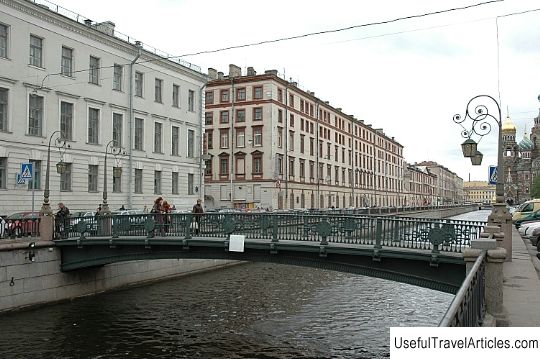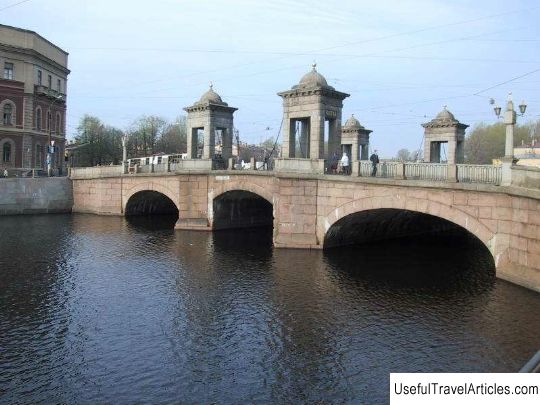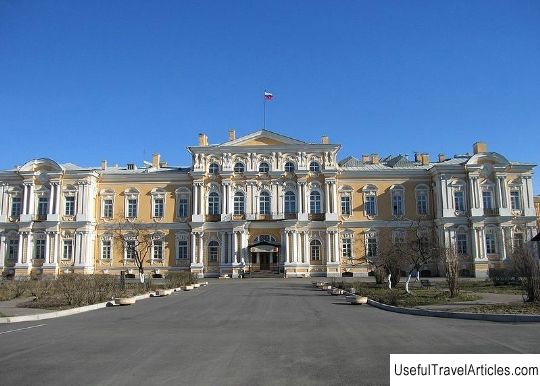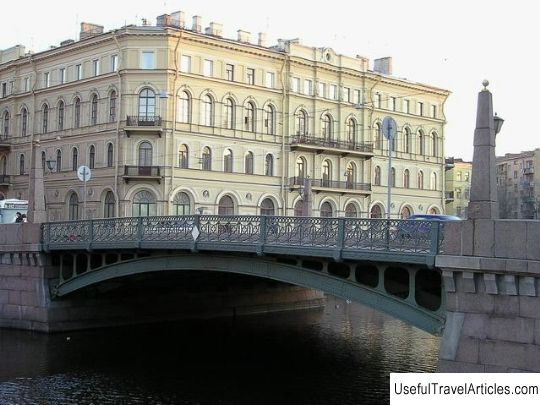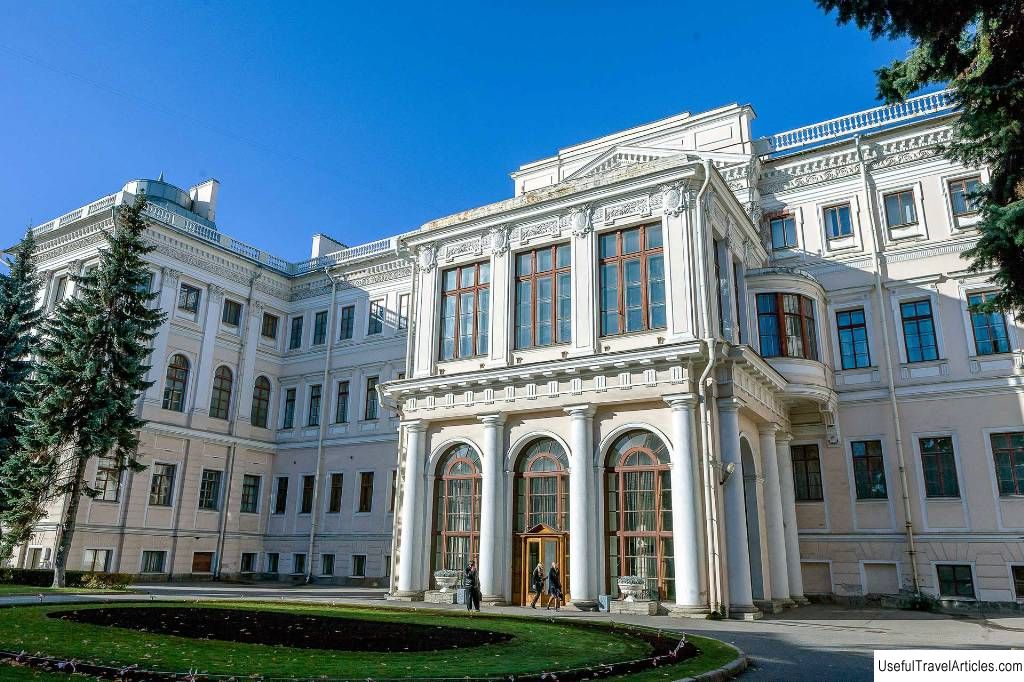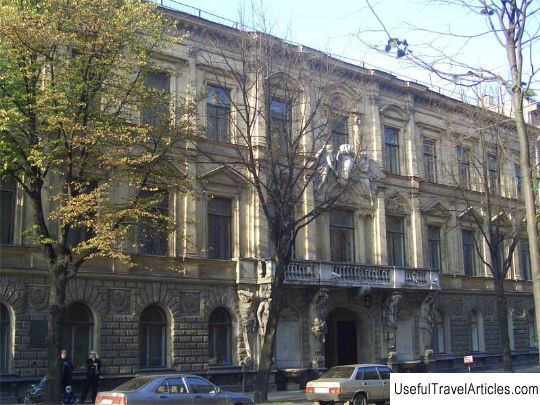Italian pedestrian bridge description and photo - Russia - St. Petersburg: St. Petersburg
Rating: 8,6/10 (8705 votes) Italian pedestrian bridge description and photo - Russia - Saint Petersburg: Saint Petersburg. Detailed information about the attraction. Description, photos and a map showing the nearest significant objects. Photo and descriptionAt the beginning of the 18th century, a palace was erected in St. Petersburg on the left bank of the Fontanka River, which resembled the Italian pleasure houses of that era. They began to call it Italian. Various meetings, meetings, negotiations were held there. From the palace to Znamenskaya Street (in our time, Vosstaniya Street) there was a large garden with greenhouses, which also after some time began to be called Italian. Following the palace and the garden, the street was first named Sadovaya Italian, later Malaya Italianskaya. The street facing the right bank of the Fontanka (opposite the palace) became known as Bolshaya Italianskaya. Accordingly, the bridge connecting both Italian streets, Bolshaya and Malaya, also began to be called Italian. In 1902, these streets were renamed: Malaya Italianskaya - into Zhukovskogo Street, and Bolshaya Italianskaya - into Italyanskaya. The Italian bridge connects the Spassky and Kazansky islands of the central district of the city through the Griboyedovsky canal. It is located next to the Church of the Resurrection of Christ, better known as the Savior on Spilled Blood, and not far from the State Russian Museum (Mikhailovsky Palace), 300 meters from the Gostiny Dvor metro station (exit to the Griboyedov Canal). The Italian Bridge was built in 1896 at the site of a haulage. The single-span wooden structure consisted of plank trusses with a clear span of 19.7 m. The author of the project was engineer L.N. Kolpitsyn. To preserve the gap under the bridge, external flights of stairs were built at both ends. The bridge was paved with xylene slabs. In 1902, according to the project of K. Bald, the bridge was rebuilt, replacing the xylolite slabs with boards. In 1911-1912. this design was replaced by a new one, the project of which was developed by engineer K.V. Efimiev. Now the Italian bridge has become cobbled with supports of three-row wooden piles, located in 2 mutually perpendicular directions. The span of that bridge was 9.1 m. In 1937, the Italian bridge was completely rebuilt so that two heating pipes could be laid through it. According to documents from 1946, the length of the bridge was 18.4 meters, the opening of the bridge was 8.5 meters, and the width between the railings was just over 2 meters. Over time, the bridge fell into disrepair. In 1955, during the renovation of the embankment, it was rebuilt again, acquiring its present appearance. Engineering calculations were made by V.S. Vasilkovsky and A.D. Gutsait. The Italian bridge was built in the style of classicism. It did not retain the original decor details. The decorations are in many ways similar to the artistic elements of other bridges, which were built in the early 19th century. The railings of the bridge are sectional. They are made of rounded rods with capitals - opening buds - and are decorated with cast iron uprights with additional details: peaks with acacia twigs, round shields with crossed swords. On the shields there are five-pointed stars, which were common as decorative elements in Soviet times. The railings of the bridge are a lot like classic designs. The appearance of the lighting elements of the Italian Bridge - lanterns and floor lamps - is similar to examples of Russian classicism and resembles, for example, the floor lamps of the Green Bridge on the Moika. The facades of the load-bearing beams are also decorated in the classicism style, but instead of the sculptural ornamentation with plant or animal themes common in classicism, the fields of beams are divided along curved arcs into three parts. This reminds of the division of the entablature of buildings made in the style of classicism into a frieze, architrave and cornice. The lower and upper strips of the beams are decorated with many artistic and architectural details and elements.      We also recommend reading Fortress Yeni-Kale description and photo - Crimea: Kerch Topic: Italian pedestrian bridge description and photo - Russia - St. Petersburg: St. Petersburg. |
